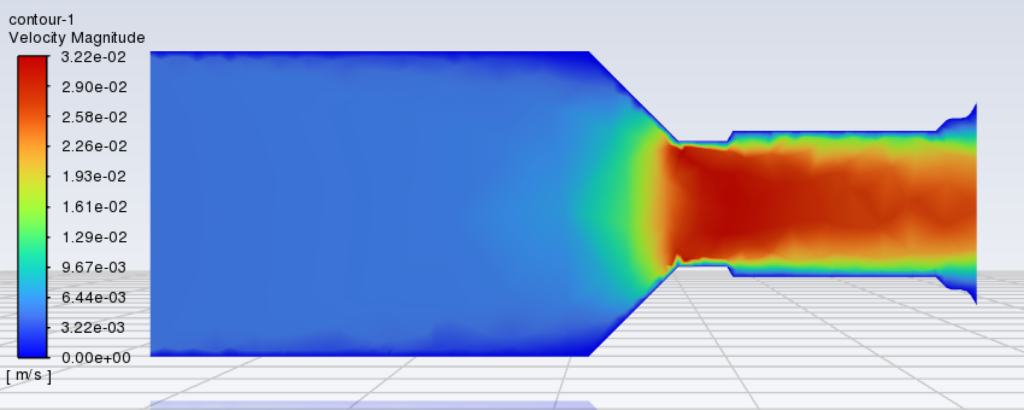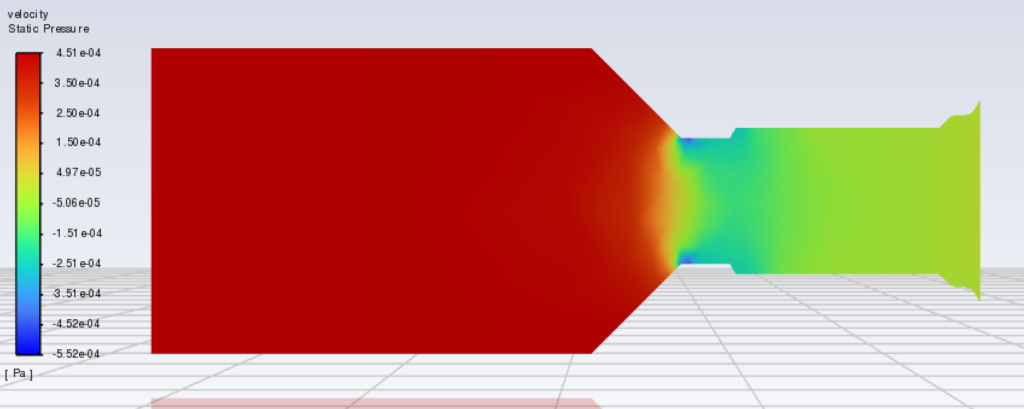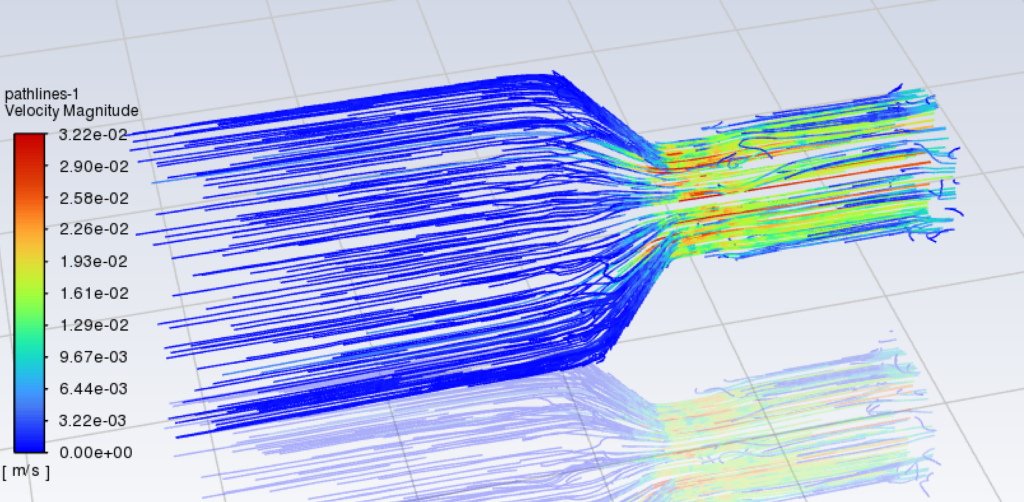Nozzles play a critical role in fluid flow applications, affecting velocity, pressure distribution, and turbulence characteristics. This study presents a Computational Fluid Dynamics (CFD) analysis of a nozzle to evaluate key performance metrics, including velocity magnitude, static pressure distribution, and streamlines.
The nozzle model was analyzed using CFD simulations to assess fluid behavior under various flow conditions. The primary parameters considered were:
- Velocity distribution
- Static pressure changes
- Flow pathlines
1. Velocity Magnitude Analysis

The velocity contour results highlight the transition of flow from a low-speed inlet to a high-speed exit region. As expected, the velocity increases significantly in the converging section of the nozzle, reaching a maximum of approximately 0.032 m/s at the throat, as depicted in the velocity contour plot. This confirms the expected acceleration due to nozzle contraction, validating theoretical fluid flow principles.
2. Static Pressure Distribution

The static pressure results reveal a sharp pressure drop as the fluid moves through the nozzle. The inlet region exhibits a high-pressure zone, which rapidly decreases toward the nozzle throat due to the increase in velocity. The lowest pressure regions are observed at the narrowest section of the nozzle, consistent with Bernoulli’s principle.
3. Flow Pathlines and Streamlines

The streamline visualization demonstrates smooth and well-guided flow through the nozzle. The flow is predominantly laminar with minimal turbulence, ensuring efficient energy conversion from pressure to velocity. Some minor recirculation zones appear near the nozzle walls, which may be attributed to boundary layer effects.
Conclusion
The CFD analysis effectively captures the fundamental flow dynamics within the nozzle. The velocity, pressure, and streamlines align with theoretical expectations, demonstrating the efficiency of the nozzle design. These insights can be instrumental in optimizing nozzle performance for various engineering applications, such as propulsion systems, fluid injectors, and industrial flow control.
Further refinements in mesh resolution and turbulence modeling may provide even greater accuracy in future simulations. Overall, the study showcases the importance of CFD in understanding and improving fluid flow systems.

